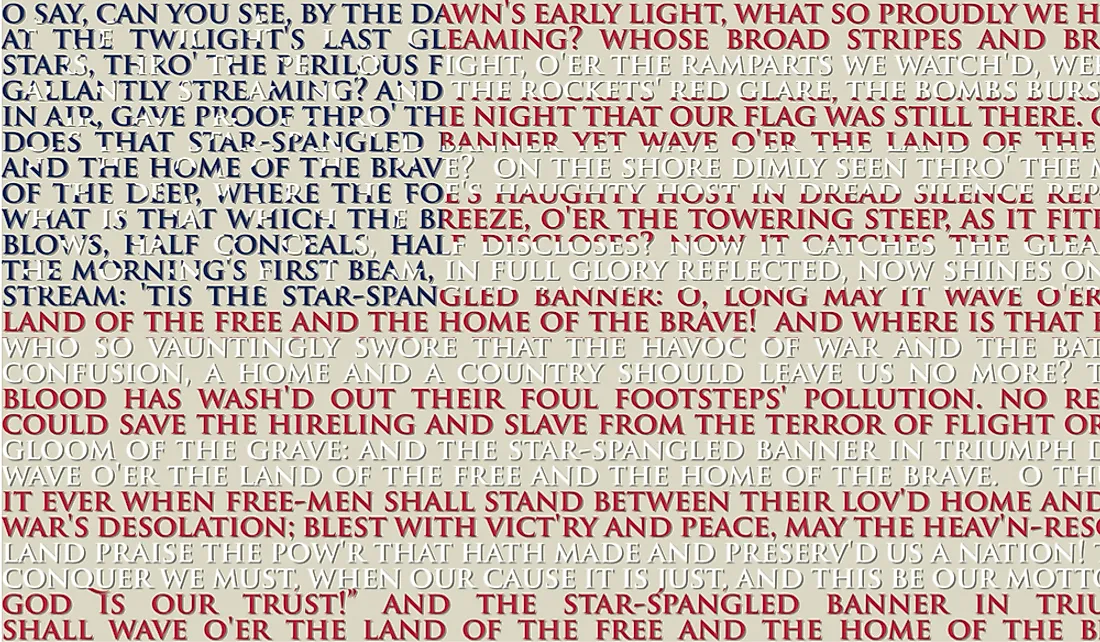What Does The National Anthem Mean?

The United States adopted the Star-Spangled Banner as their national hymn in 1931. The lyrics of the American national anthem are from a poem titled Defence of Fort M’Henry which Francis Key wrote on September 14, 1814. Francis wrote the poem after seeing the Royal Navy bombard Fort McHenry during the Baltimore War. He was inspired by the Star-Spangled Banner which remained flying after the US forces won.
History of the National Anthem
After the Raid of Alexandria and the Burning of Washington, Francis and John Skinner set sail on a prisoner-exchange mission, on September 3, 1814. Their ship was flying a truce flag, but since they were aware of the plans of Baltimore attacks, they were captured and held captive until the war ended. Francis witnessed the battle, and he saw the "storm flag" flying during the bombardment, but after the fighting stopped, he was not sure who had won. The storm flag was lowered on September 14, 1814, and replaced by the bigger American flag.
Francis was inspired by the sight of the American flag and the US victory. Mary Pickersgill and other workers made the 15 stripes and 15 stars flag which was later named the Star-Spangled Banner. Francis wrote the poem the next day while on the ship before being released on September 16. He finished the poem in his room at the Indian Queen Hotel and named it Defence of Fort M’Henry. The poem was set to the tune of a song known as The Anacreontic Song which was written by John Smith. Francis’s poem was recognized for official use by President Wilson in 1916 and the US Navy in 1889. The US adopted it officially in 1931
Meaning of the National Anthem
The national anthem has four verses which recount the day-long battle between the American and British forces referred to as the Battle of Baltimore. The first verse talks about the "perilous fight" which refers to the Baltimore war. Francis had been captured, and he could only see the red glares caused by the bombardment. The only thing that gave him hope was the sight of the Star-Spangled Banner. As long as the American flag was seen, the Americans believed that the British forces had not captured the fort. The "home of the brave" refers to the heroic act of the American forces who were fighting for their country.
After the war ended at night, Francis was not sure who had won the battle, but then when he saw the American flag still flying, he was convinced that the British were defeated. The anthem means that as long as the US flag is still waving America will remain a vast country of the free and the brave. Francis vented out on the British in the third verse. The fourth verse is fully triumphant, and it talks about the United States of America being a "heaven-rescued land."
Criticism of the National Anthem
Various people have argued that the phrase "hireline and slave" glorify slavery. Robin Blackburn argues that the phrase refers to many of the ex-slaves who fought for the British. Professor Mark Clague elaborated that Francis’s lyrics vilify the British forces and not glorify slavery. Clague argued that the reference to slavery refers to how the British manipulated the slaves by promising them freedom in exchange for them fighting for them. Some people believe that the phrase might refer to the act of the British kidnapping sailors for forcing them to defend the British.











